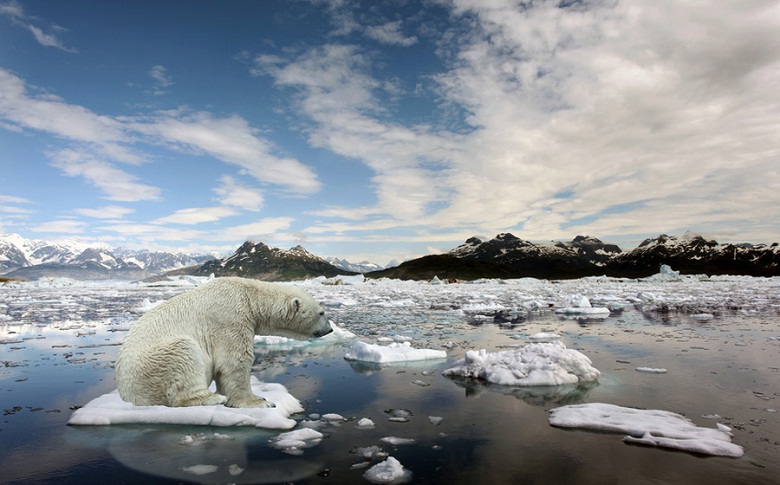

Global warming is the increase in the average temperature of Earth's near-surface air and oceans since the mid-20th century and its projected continuation.1 Simply put, it is the warming of the air close to the earth's surface. Global warming is also referred to as climate change, and is classified as a problem that affects people, animals, and the environment.2
Deforestation and burning of fossil fuels, which are human activities, have contributed to global warming. By upsetting the natural balance of gases in the atmosphere, we have caused our planet to become more like a greenhouse than it is supposed to be. Trees in large quanities replenish the oxygen in the air by photosynthisizing carbon dioxide. Fewer trees means more carbon dioxide.
Average air and ocean temperatures are rising all over the planet.
Ice caps and icebergs are melting in an attempt to cool the planet down, which is rasing the water table and endangering people who live at sea level or below. Animals that are not able to handle the higher temperatures are dying.

We can slow global warming by replenishing trees, especially in the rainforest regions. We can reduce the amount of energy we consume and convert to solar energy. We can stop polluting the planet and help clean up, reuse, and recycle. We can stop being excessive and wasteful in our buildings and not build more than what is actually necessary. But everyone, not just a few people, needs to do his or her part to accomplish this goal.
GlobalWarming.org (http://www.globalwarming.org) offers a compilation of current news and analysis about climate change.
Refer to these sites, or others sources, for in-depth information about this topic.
